If you’re visiting Alaska and thinking of a wildlife adventure or if you’re looking for a Juneau shore excursion, then book yourself a Juneau whale watching tour. Whale watching in Juneau is an opportunity to see migratory North Pacific humpback whales.
I visited Juneau on a package tour and cruise booked through TripADeal.
Contents
Juneau whale watching tours
There are many whale watching tours you can choose from in Juneau.
Half or full-day tours are possible, but I decided to do a ‘combo tour’ with the Gastineau Guiding Company, arranged through our Royal Caribbean cruise ship tour desk.
The Gastineau Guiding Company offers small group whale watching cruise experiences with a marine naturalist on board.
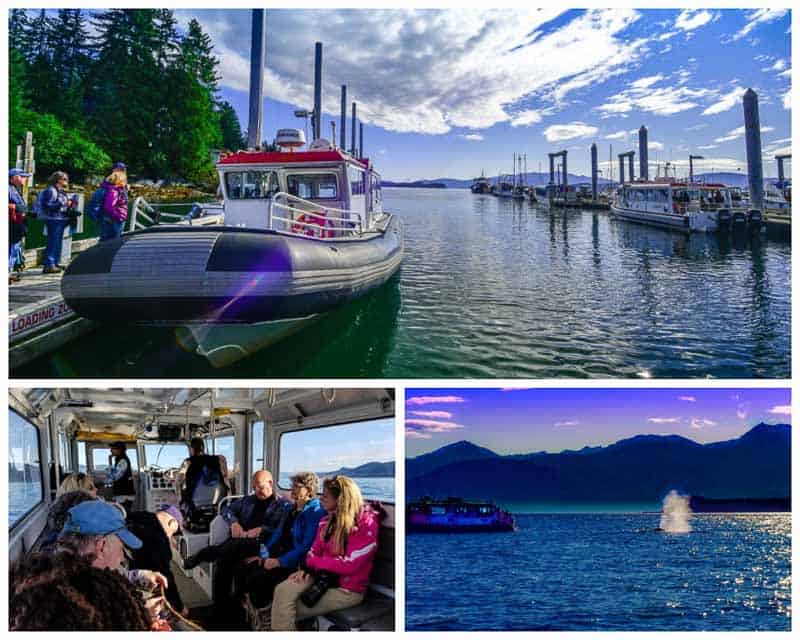
They can also combine a Juneau whale watching experience with a Mendenhall Glacier Photo Safari. And that especially appealed to me with my wildlife and landscape photographic interest.
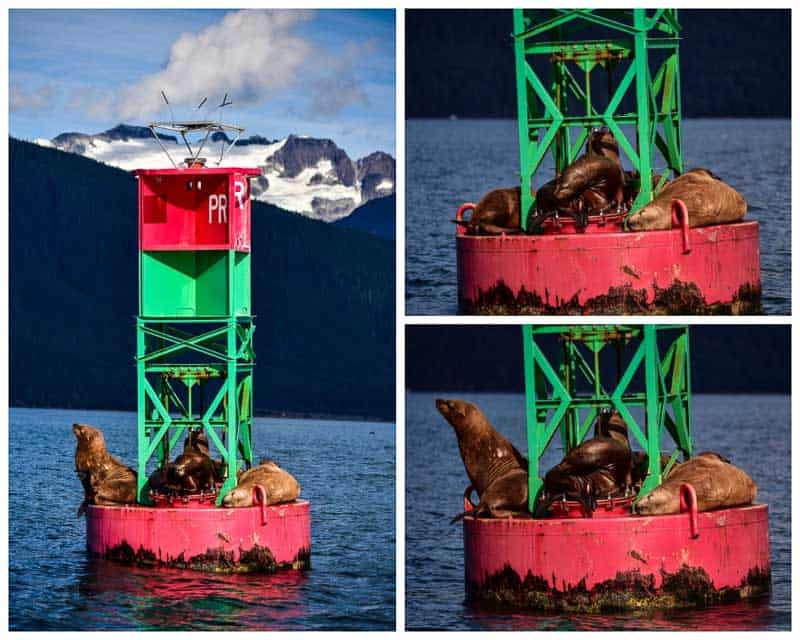
Juneau Whale Watching
Juneau is Alaska’s capital city.
It is only accessed by air or sea and is home to a population of around 32,000, humans that is.
But from April to November, the Juneau whale watching season, those numbers are expanded by over 600 North Pacific humpback whales.
North Pacific humpback whales migrate to the nutrient-rich waters of the Southeast Alaskan waters.
It’s a long 6000 mile round trip from Hawaii to the northern Inside Passage.
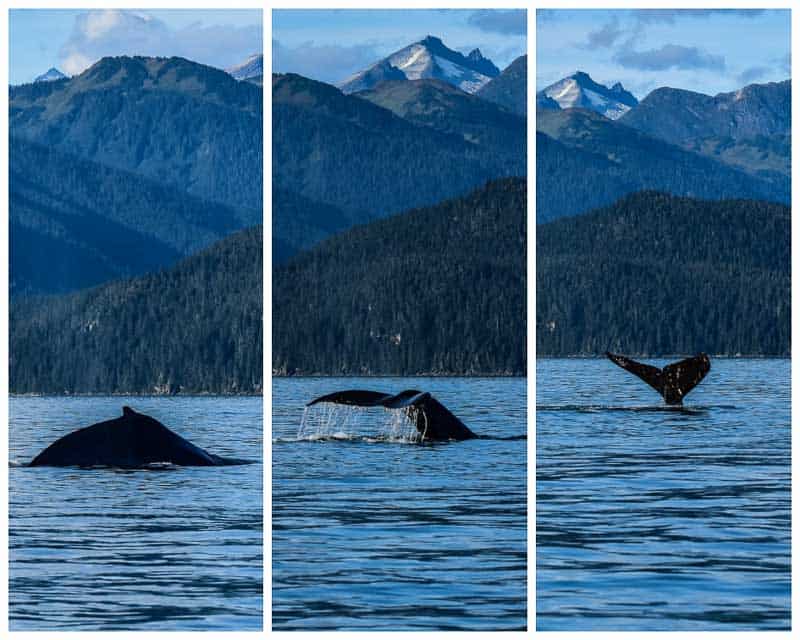
They come during the summer months, with a few staying all year round. And these gargantuans of the sea do the trip in about a month. Amazing!
Why Humpback Whales Go To Alaska
The humpback whales come to Alaska to feed, as they generally fast in Hawaii.
Their main activity is foraging for food to fatten up before they head south again to mate.
Krill (shrimp-like crustaceans) and baitfish such as herring are amongst their favourite food.
When a humpback whale opens its mouth, it expands the linear folds under its jaw and neck. The krill is then filtered along its baleen which hangs from its upper jaw.
A humpback can eat over a ton of krill a day.
Humpbacks often practice ‘lunge-feeding’ and coordinated foraging amongst groups.
The latter is particularly spectacular to witness and is called “bubble-net feeding”.
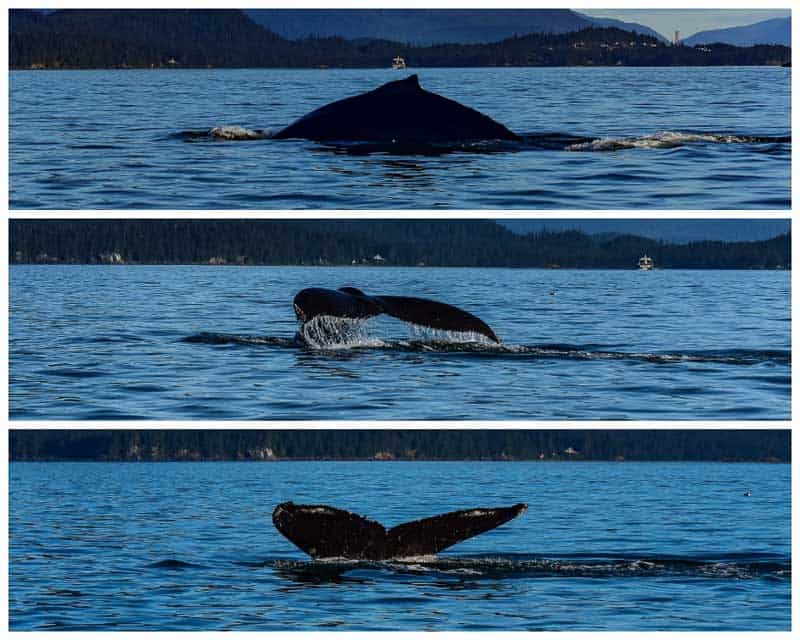
But to see a whale actually feeding on a whale watching tour would be quite rare and very special (there’s your challenge for the day!).
Whale Watching Regulations
In order to help preserve and care for the local marine wildlife, many commercial Juneau whale watching tour companies adhere to Whale SENSE, a responsible whale watching program.
The US Atlantic and Alaskan program is sponsored by NOAA Fisheries and Whale and Dolphin Conservation.
Some of the regulations promoted are:
- Boats are not allowed to approach closer than 100 yards to a whale or group of whales.
- There can be no ‘herding’ activity by a boat, and certainly no chasing a whale or separating a group of whales.
- If a whale approaches a boat, the engine should be cut or put into neutral. Only once the whale has passed the 100-yard mark can the engine be put into gear.
What To Look For When Whale Watching
The most common sight to look for is a whale ‘blow’ or spout. This is often the easiest thing to see even from a large distance away, with or without binoculars.
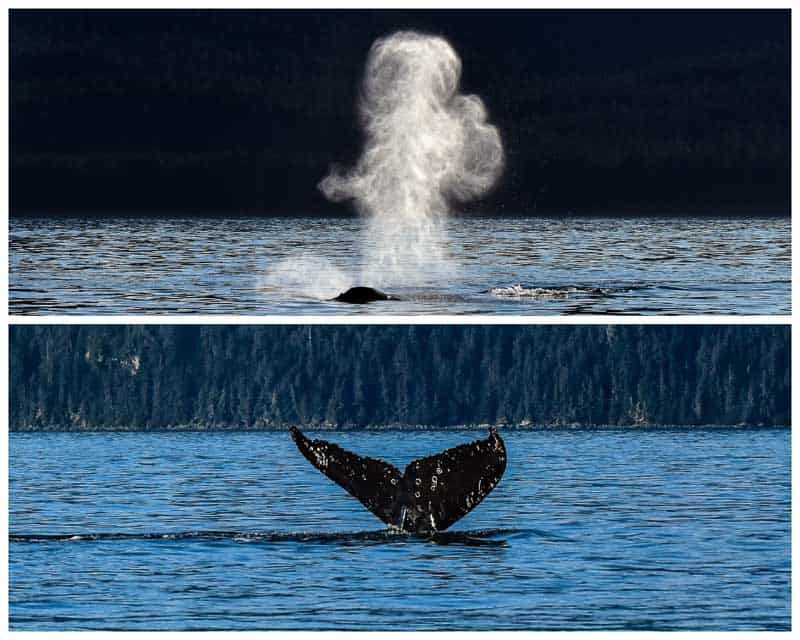
Once your eyes accommodate, look for a whale’s curved back or ‘hump’ as it swims along the surface or begin a dive.
When a humpback whale dives, it often throws its tail high in the air showing its tail ‘fluke’. As its tail sinks back into the water, the underside pattern of the tail or fluke gives its individual identification pattern.
This is used by researchers and scientists to recognise a particular whale and record its migration pattern.
4 Tips For Alaska Whale Watching
- Wear something warm – I know this is stating the obvious, but layer up as the weather can change suddenly from cold winds to warm sunshine
- Bring sunglasses – especially polaroids if you have them as they help cut the glare off the water making spotting whales much easier
- Binoculars – always a good thing to carry, although many tour operators will have them onboard for you to use
- A camera of course! – one with a good telephoto zoom is ideal, but if nothing else, use your phone camera. Uploading your fun selfie images instantly to social media sites is a great way to be the envy of all your friends who didn’t cruise with you!
Many whale watching tours are in warm, covered in boats.
Food and hot and cold drinks are often available but check with the tour particular guides. Your own water bottle is always a good idea.
Mendenhall Glacier Trail Walk
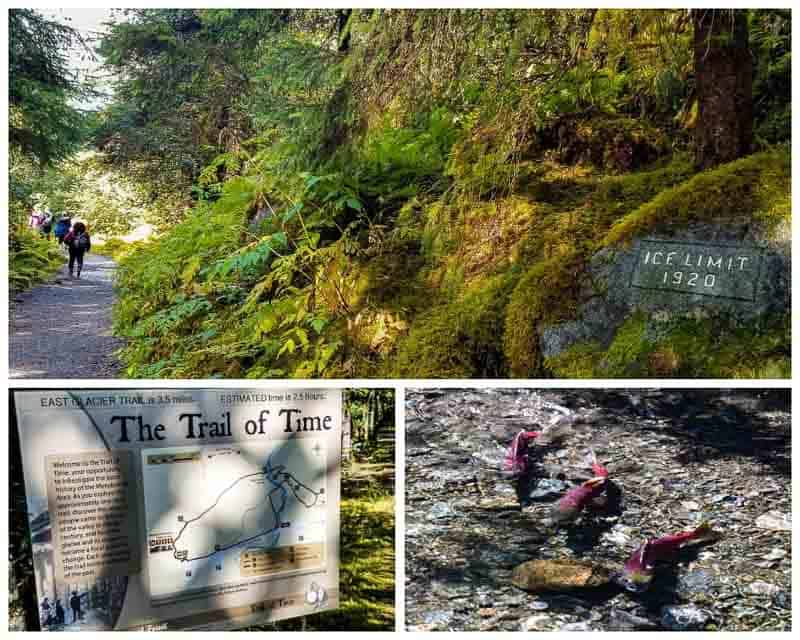
Our Mendenhall Glacier combo tour took us along a short trail walk, the Trail of Time.
This was a short 1-mile walk, part of the 3.5-mile East Glacier Trail.
Mendenhall Glacier is the world’s only ‘drive up to’ glacier and is Juneau’s most visible ‘ambassador’.
The glacier is 13 miles long and extends into Mendenhall Lake, frequently launching icebergs into the lake.
Many easy and moderate trails pass through the Mendenhall Glacier park or Tongass National Park forest and alongside the lake.
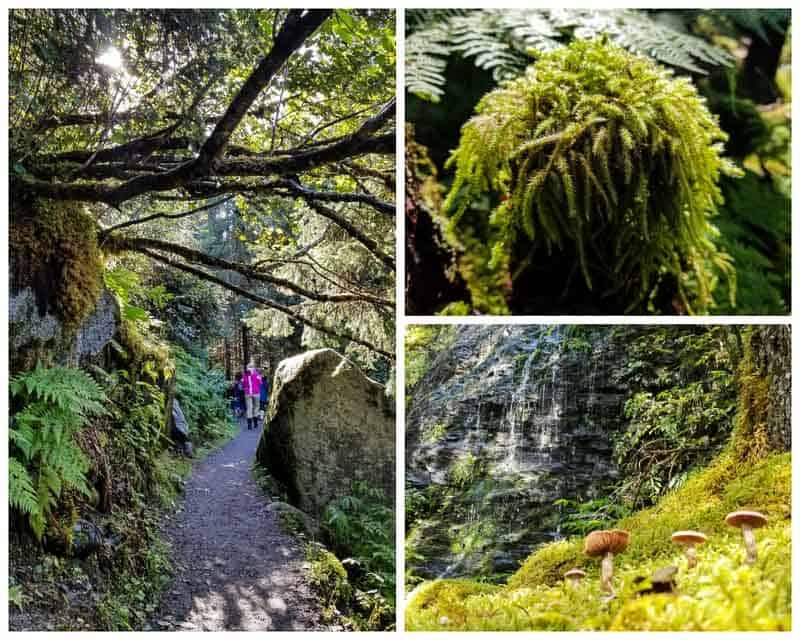
Our photo guide educated us in the natural history of the glacier as we passed by signs of previous ice limit lines of the glacier over the last century (the oldest we saw was 1916).
The rainforest was extremely green and lush, with moss and lichen as I had never seen before.
As we passed over the icy cold but crystal clear Steep Creek, a group of bright red spawning salmon were swimming against the creek’s flow.
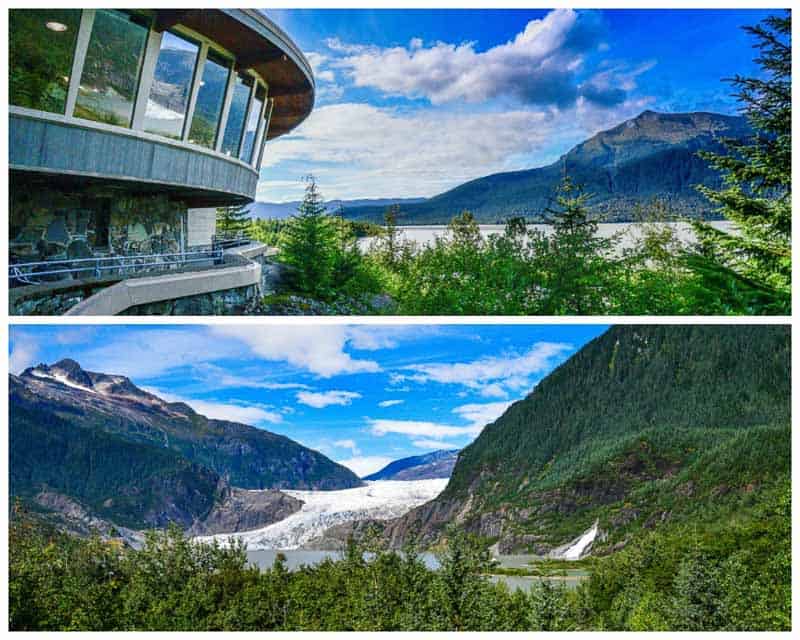
We had many photographic vista points of the Mendenhall Glacier, and the end of the line was the Mendenhall Glacier Visitor Centre, a rather stunning building overlooking the forest, lake, and glacier.
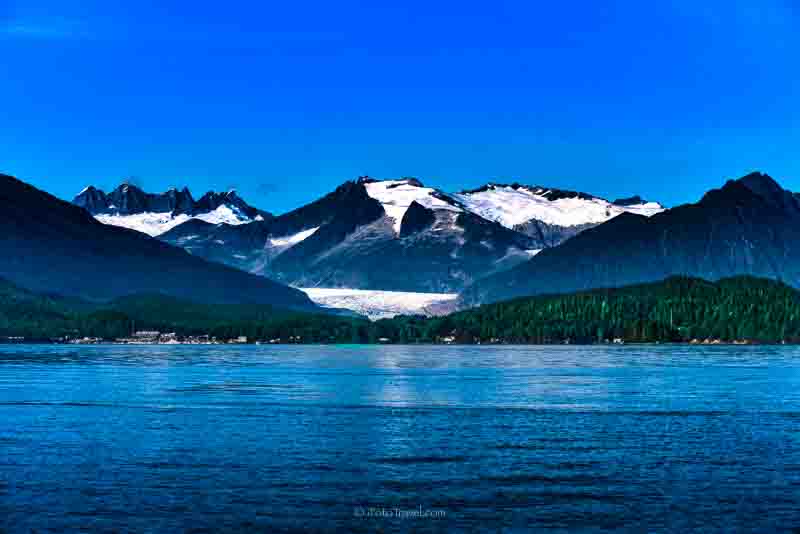
However, the best view of the Mendenhall Glacier was from the water of the Mendenhall Lake during our whale watching cruise.
Just awesome, and a great end to a fabulous day out.
Juneau certainly offers more than just Alaskan whale watching, that’s for sure!
More Whale Watching
If you’re keen on whale watching check out these whale watching cruises:
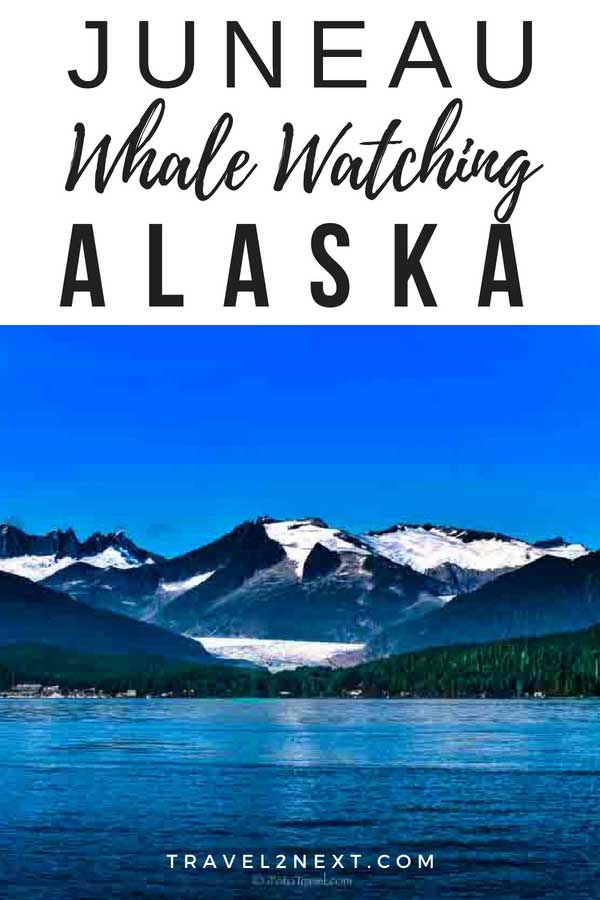
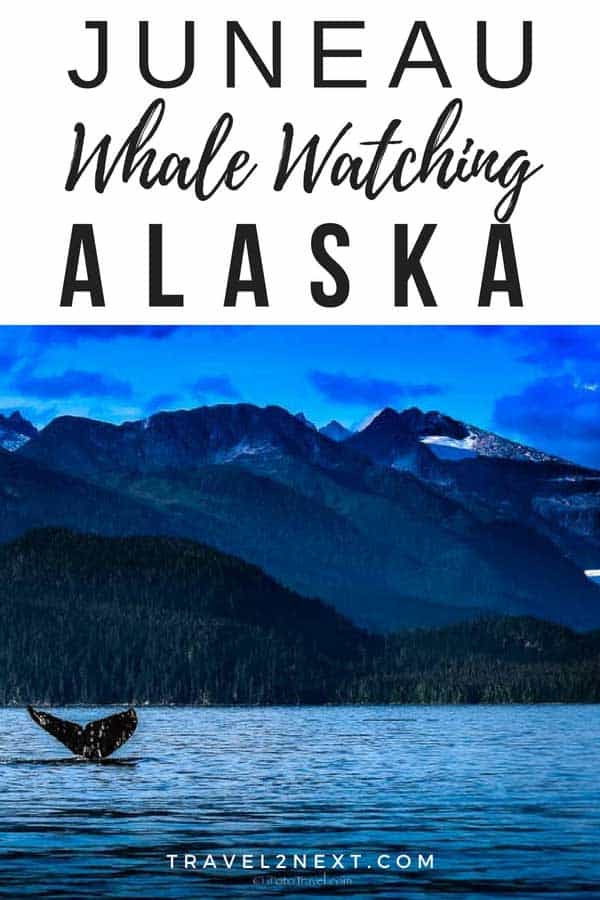
Plan Your Trip

Rent A Car – Find the best car rental rates at Discover Cars. They compare car hire companies to provide you with the best deal right now.

Find A Hotel – If you’re curious about this article and are looking for somewhere to stay, take a look at these amazing hotels.

